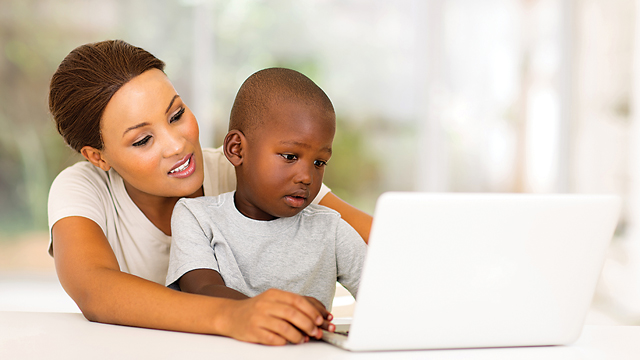When our parents raised us, their concerns were centered around three pillars: the birds and the bees, driving, and drugs and alcohol. These topics addressed potentially life-altering challenges young people encountered. Today, as parents, we want to guide our children the best we can, just like our parents did. Why? Because we love our kids and want them to be safe. But there’s a fourth pillar now, and it’s one not all parents feel comfortable with – our children’s digital use.
There is a generation of digital technology users who need our help. And while parents might feel they are ill-equipped or too unfamiliar with the various technology interfaces to help guide and shape their children’s use, it’s too important not to both address and continually maintain a conversation about safe, kind, and mindful digital technology use. As with the first three pillars, our new fourth one begins with the same message: We love you and we want you to be safe.

While it might have been called a digital footprint a few years ago, now our children have and continue to create a digital presence which will be with them permanently – shaping and affecting them for the rest of their lives. Whether it’s potential internships, college choices, or employment opportunities, each organization, school, or company will have someone checking online for your child’s digital presence. Is that presence worthy of a college acceptance? Is that presence hireable? The truth is, as some teens apply to colleges or enter the workforce today, they are finding themselves in a situation where they have to delete entire accounts on social media, or at the very least, delete negative or incendiary comments or posts they have made online. Of course, parents would prefer to have their kids’ online behavior reflect a certain level of digital citizenship from the start.
While the criteria used by colleges and businesses is essential for our children to understand, words like “forever” and “future” are difficult for an adolescent brain to fully comprehend. They do understand, however, words like “represent” and “now” and this is how we can guide our children toward maintaining a positive digital presence, regardless of our own background in digital technology.
We want our children to represent the best of who they are now – the person their family and close IRL (in real life) friends know. Does your child understand safety, kindness, and mindfulness when dealing with people face-to-face? To be sure. Thus, the message and the discussion with children is that this understanding is just as important when dealing with others via digital technology. Whether through the mobile phone, tablet, or computer, an online relationship with others carries more weight and responsibilities. We can and should help our children clearly define how to be safe, kind, and mindful online, as we continually draw upon how they interact in real life and face-to-face.
Finally, are we role-modeling for our children? Are we mindful of our own screen time, and avoiding the use of technology when driving? Do we, as adults, make time and space to be digital-free? Are we making sure a post is kind? Do we have the permission of others mentioned or pictured before it is posted? And are we finding ways to use social media and technology for good causes? Are we sharing these positive behaviors with our children? Continually working with them on and modeling this awareness and responsibility is the work of parenting with regard to this fourth pillar.

And for our younger children, this pillar also stands tall. As parents, we must be concerned with digital usage in terms of contacts, content, and screen time. With so much information distributed digitally, how best to introduce technology use to younger children is one of today’s greatest parenting challenges. Please don’t discount your parenting skills here. Delve into the research, read varying opinions and stances, and then rely on yourself to guide your child as the exposure to technology devices begins.
When it comes to a child’s digital usage – regardless of age – here are tenets which I consider to be fundamentally vital for safe, kind, and mindful use:
Know all your child’s online relationships.
We must make it clear how important it is for users to know, eye-to-eye and face-to-face, anyone who is a digital friend, follower, or contact. And as a parent, your responsibility is to keep up with this. It’s hard work, but beyond valuable, to ensure your child is only communicating with people he and you truly know. Take stranger danger to a digital space, and remember, your child’s safety is paramount.
Have access to all user names and passwords for all sites that require one.
Companies collect data about your children, and you must know which companies and what they know. Teaching kids about the importance of privacy at a young age will help your child develop awareness. Parents should always ask the question, “Why is this information needed?” before a child shares anything online. For safety reasons, you should have access to all usernames and passwords so you can access your kids’ accounts should the need arise. Many families have these written on a piece of paper in a sealed envelope and marked, Open only in case of emergency.
Create family rules for screen time.
With your children, come up with family/house rules for screen time for everyone. The entire family should be a part of both creating and abiding by the plan. Make valuable time to be a family and celebrate the smiles and love without technology. Dinner, a hike, the screen-free break – practice all of these and more in an effort to establish a stronger family bond and meaningful relationships.
Technology is woven into most every aspect of our lives these days, and there are countless ways it can and should enhance how we engage in the world. Taking steps to help establish digital citizenship will show our kids: We love you and we want you to be safe.




